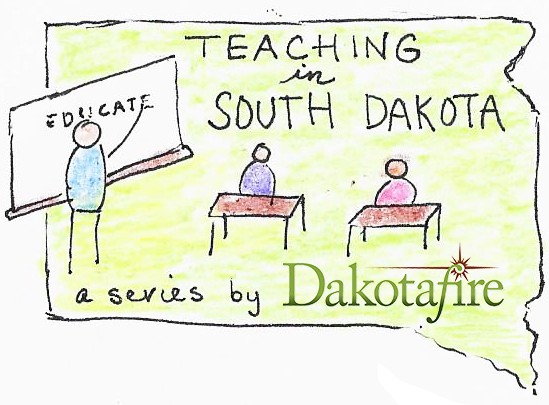by Jeff Fastnacht, superintendent, Ellendale (N.D.) School District
The need for teachers has been a reoccurring topic in both South Dakota and North Dakota for several years. It was thought to be more significant in South Dakota, and that may be so, but according to a recent story in The Fargo Forum, it is a growing concern here as well.
 “Halfway through the school year, more than 200 teaching jobs remain vacant in North Dakota’s public schools after a
“Halfway through the school year, more than 200 teaching jobs remain vacant in North Dakota’s public schools after a
‘community experts’ pilot program aimed at easing the state’s teacher shortage failed to fill a single slot,” according to a Jan. 5 report.
The story in the Forum focused on the lack of help from a one-year program designed to allow some without teaching degrees to fill specified vacancies. What many don’t realize is that this list of possible positions is very narrow and does not include core subjects, such as math, science and literature. Thus, North Dakota continues to have the following vacancies: 35 in career
technical education, 32 in social studies and 28 in special education. This in comparison to 65 teaching openings posted on the South Dakota Associated School Boards website. So neither state is flush with teaching candidates.
So what are some reasons for the shortage?

Promotion – How many parents today are encouraging their child to become a teacher? Personally, I have had one of my children consider going into law enforcement. My response, “Really, son is that what you want to do?” Then I turn on the news and reinforce that today’s society appears to have little respect or admiration for law enforcement, and, by the way, you will do that job for little money. Isn’t that the same for the teaching profession? Turn on the news. How often is the profession raised up and admired enough by adults to cause their children to consider it as a career? More often than not, parents are responding to their child’s inquiry to become a teacher as I did to my son about being a cop: negatively.
Autonomy – Almost everyone has a boss. Even CEOs have a board they must report to. Yet, autonomy in one’s job is a strong indicator or happiness and satisfaction. Educators today have lost almost all their autonomy to do the job they are trained to do. Why would any young person look fondly on a profession that is significantly regulated from the top, down? Kids in our high schools see teachers being threatened and disrespected more and more by students and parents. They fully realize they have to be ready to plan for lessons but also bombs and active shooters. They see teachers spending more time preparing for tests and frustrated. Thus, that office job at Microsoft in Fargo looks better and better and they go for it.
Compensation – Some want to dismiss this, but let’s be honest. A student today can become a nurse and earn—on average–$26 per hour ($54,000 annually) or start as a North Dakota teacher for about $34,000 a year. In addition, that new nurses at Sanford will be getting a $20,000 signing bonus. Wow; that would seem simple. Knowing both will leave a North Dakota university with $40,000 to $60,000 in debt, which would you choose? In addition, unknown too many outside of the profession, North Dakota teachers will then contribute commonly 12 percent of that salary to North Dakota Teachers’ Fund for Retirement. That does not leave much left to pay the rent.
So what can we do?
The answer will have to be multi-faceted and it will not be corrected quickly. I have proposed to several legislators a need to develop a program to pay off new teacher’s higher education debt. I believe this would be enticing to some students and their parents. Would you encourage your child to pursue a career in education if they could write off their college debt after five or six years of teaching?
I also believe we need to promote the profession. We need to work as earnestly as Sanford on shining the positive light on teaching and recruit the best and brightest like they do. Schools don’t have the combined corporate presence that can be accomplished by Sanford or Microsoft, but we are going to have to figure out a way to do it. We need to start reaching our young people in elementary school, to get them to see the wonders and benefits of becoming a teacher.
The teacher shortage is a real concern, and very shortly there will not be a school in North or South Dakota that is not feeling the pinch, cutting programs or increasing class sizes. It is going to be inevitable. But, with some work today, we can start to turn the tide.
Editor’s Note: This is the sixth in a series on South Dakota’s teacher shortage. Read about the following other installments here:

Leave a Reply